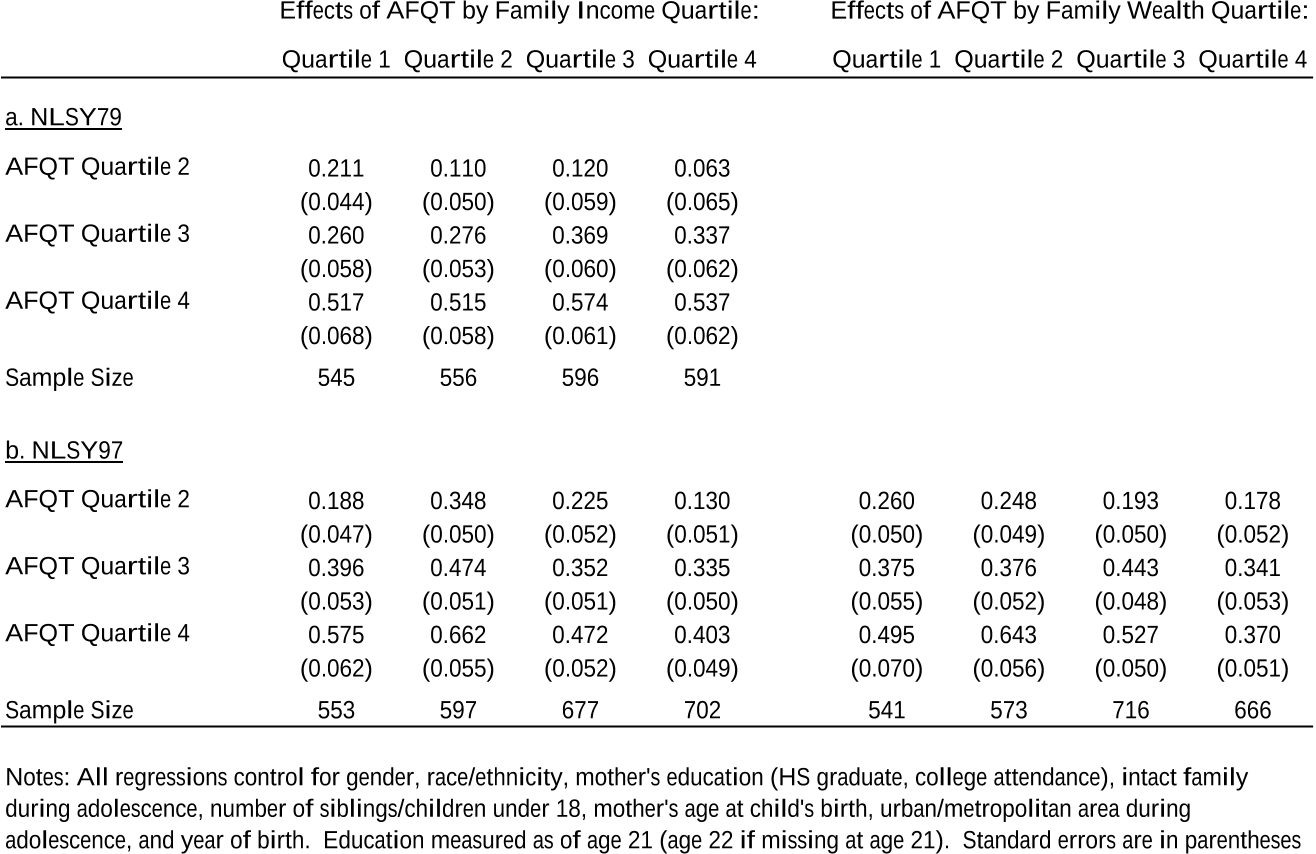The Nature of Credit Constraints and Human Capital
Reads0
Chats0
TLDR
This paper developed a human capital model with borrowing constraints explicitly derived from government student loan (GSL) programs and private lending under limited commitment, which helps explain the persistent strong positive correlation between ability and schooling in the U.S., as well as the rising importance of family income for college attendance.Abstract:
We develop a human capital model with borrowing constraints explicitly derived from government student loan (GSL) programs and private lending under limited commitment. The model helps explain the persistent strong positive correlation between ability and schooling in the U.S., as well as the rising importance of family income for college attendance. It also explains the increasing share of undergraduates borrowing the GSL maximum and the rise in student borrowing from private lenders. Our framework ofiers new insights regarding the interaction of government and private lending as well as the responsiveness of private credit to economic and policy changes.read more
Figures

Table 3: Baseline Model Parameters 
Figure 4: dU , hU , hX , and hG for high wealth individuals (w > w̄) 
Figure 3: dU , hU , hX , and hG for low wealth individuals (w ≤ w̄) 
Figure 8: ‘Year 2000’ GSL and Private Lending Constraints 
Figure 9: Private Borrowing (‘Year 2000’) 
Table 2: Estimated Effects of AFQT on College Attendance by Family Income and Wealth (NLSY79 and NLSY97)
Citations
More filters
Journal ArticleDOI
The Impact of Student Debt on Education, Career, and Marriage Choices of Female Lawyers
Holger Sieg,Yu Wang +1 more
TL;DR: In this paper, the authors develop and estimate a dynamic model to study the impact of student debt on education, career, and marriage market choices of young female lawyers, and provide new insights into the design of public policies that aim to increase public sector employment.
Book
From Mines and Wells to Well-Built Minds: Turning Sub-Saharan Africa's Natural Resource Wealth into Human Capital
Benedicte de la Briere,Deon Filmer,Dena Ringold,Dominic Rohner,Karelle Samuda,Anastasiya Denisova +5 more
TL;DR: In this paper, the authors focus on the importance of early child development and early child nutrition, care, and education for children in Sub-Saharan Africa's resource-rich countries, where children in these countries are more likely to die before their first birthday than children in other countries with similar income.
Journal ArticleDOI
The Effects of State‐Mandated Financial Education on College Financing Behaviors
Christiana Stoddard,Carly Urban +1 more
TL;DR: This paper examined a policy lever that may improve these decisions: high school personal finance graduation requirements, which increased aid applications and acceptance of federal loans, while decreasing the likelihood of holding credit card balances.
Journal ArticleDOI
Human Capital Risk, Contract Enforcement, and the Macroeconomy
TL;DR: In this paper, a tractable macroeconomic model with human capital risk, age-dependent returns to human capital investment, and endogenous borrowing constraints due to the limited pledgeability of human capital (limited contract enforcement) is developed.
Posted Content
Online Appendix to "Inequality in Human Capital and Endogenous Credit Constraints"
James J. Heckman,Rong Hai +1 more
TL;DR: A model in which individuals face uninsured human capital risks and invest in education, acquire work experience, accumulate assets and smooth consumption is developed and estimated, finding evidence of substantial life cycle credit constraints that affect human capital accumulation and inequality.
References
More filters
Journal ArticleDOI
The Production of Human Capital and the Life Cycle of Earnings
TL;DR: In this paper, the authors provide a framework for the understanding of many aspects of observed behavior regarding education, health, occupational choice, mobility, etc., as rational investment of present resources for the purpose of enjoying future returns.
Book ChapterDOI
Changes in the Wage Structure and Earnings Inequality
Lawrence F. Katz,David H. Autor +1 more
TL;DR: In this article, the authors present a framework for understanding changes in the wage structure and overall earnings inequality, emphasizing the role of supply and demand factors and the interaction of market forces and labor market institutions.
ReportDOI
Interpreting the evidence on life cycle skill formation
TL;DR: In this paper, the authors formalize the concepts of self-productivity and complementarity of human capital investments and use them to explain the evidence on skill formation, and provide a theoretical framework for interpreting the evidence from a vast empirical literature, for guiding the next generation of empirical studies, and for formulating policy.
Journal ArticleDOI
Life Cycle Schooling and Dynamic Selection Bias: Models and Evidence for Five Cohorts of American Males
TL;DR: This article examined the statistical model used to establish the empirical regularity and the intuitive behavioral interpretation often used to rationalize it, and showed that the implicit economic model assumes myopia and that the intuitive interpretive model is identified only by imposing arbitrary distributional assumptions onto the data.
Related Papers (5)
The Evidence on Credit Constraints in Post-Secondary Schooling†
Pedro Carneiro,James J. Heckman +1 more